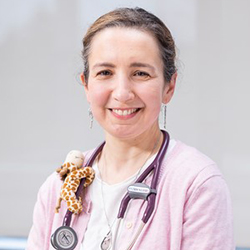
Mirzaa Lab
Understanding the genetic causes of epilepsy
Dr. Mirzaa and her colleagues traced a group of brain disorders known including macrocephaly, focal cortical dysplasia and hemimegalencephaly to mutations in a network of genes that alter the mTOR protein, which is essential in regulating cell growth and function. Focal cortical dysplasia is among the leading causes of intractable (resistant to therapy) epilepsy in the pediatric population. Increasingly frequent seizures – up to more than 50 a day – begin soon after a child is born and lead to developmental disabilities, frequent trips to the hospital and, in extreme cases, early death.
The mutations discovered by Dr. Mirzaa and her colleagues cause the mTOR signaling pathway to become overactive.
A number of drugs that inhibit mTOR mutations are already in use or in development to treat a wide variety of conditions Dr. Mirzaa and many are investigating whether those treatments can be used to treat focal cortical dysplasia and prevent potentially devastating complications. This could someday spare children from the brain surgery that is often needed to stop intractable epilepsy.
Identifying genes that cause microcephaly and other brain disorders
Mirzaa and her colleagues are uncovering the genes that cause microcephaly, which occurs when a child’s head and brain are unusually small. Dr. Mirzaa and her team use genomic technologies to identify genes that cause these disorders. As more genes are identified, it will create opportunities to test and develop new therapies that could disarm these genes and help children lead healthier lives.
Partnership Opportunities

Ghayda Mirzaa, MD
Dr. Ghayda Mirzaa is pediatrician, clinical and molecular geneticist whose work is focused on pinpointing the genes that contribute to many neurodevelopmental disorders. She helped discover many genes that cause brain growth abnormalities including macrocephaly (large brain sizes) and microcephaly (small brain size), cortical malformations and other associated co-morbidities including seizures, autism and hydrocephalus. This work is key towards opening the door for families to new treatments in the future.
-
Emily Pao
Research Coordinator
